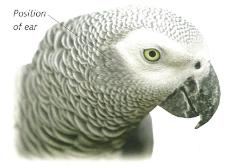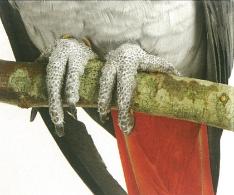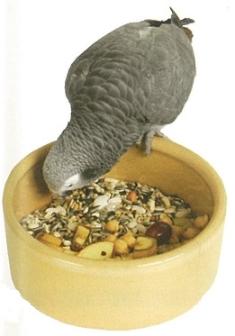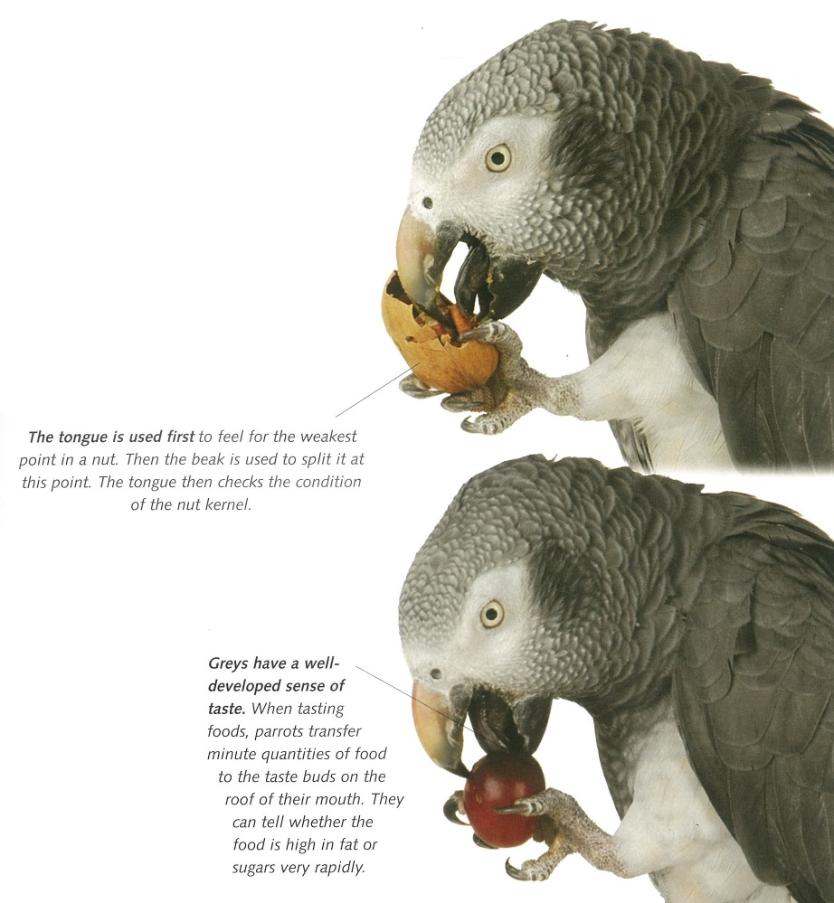There is no external 'ear' on a bird, but the opening to the ears lies just below and behind the eyes. The feathers covering the ear are sparse and allow sound waves to pass through easily. A parrot's ears work in much the same way as our ears; they are used not only to hear a similar range of sounds, but to detect
gravity, ensure balance and maintain appropriate body position. Vibrations of air caused by sound pass down the open ear tube to the eardrum. Here, these vibrations are passed through a tiny bone to the inner fluid-filled ear, which relays signals to the brain. Grey parrots hear a similar range of sounds to humans; and certainly produce sounds in a similar range.
Keeping a level head!
Parrots have an arrangement of three fluid-filled semi-circular canals in the inner ear for ensuring both balance and maintenance of the correct attitude of the body during flight. Despite the banking, diving and rolling movements birds use in flight, they tend to keep their heads as level as possible at all times while flying.
The whole of a bird's body is sensitive to touch through the skin. This includes disturbance to feathers, light touching and pain. Two areas are particularly sensitive to touch for parrots; the tongue and the feet. Parrots are perhaps unique amongst birds in the way they use their tongue. The first contact with some new food or object is normally via the front of the beak which is used to prod it, perhaps to see if it is safe. Then the tongue is used much like a finger-tip to feel it. All parrots' tongues are very muscular, as well as sensitive to temperature and texture. They are used to find the weakest point in nuts and seeds before cracking them open.
gravity, ensure balance and maintain appropriate body position. Vibrations of air caused by sound pass down the open ear tube to the eardrum. Here, these vibrations are passed through a tiny bone to the inner fluid-filled ear, which relays signals to the brain. Grey parrots hear a similar range of sounds to humans; and certainly produce sounds in a similar range.
Keeping a level head!
Parrots have an arrangement of three fluid-filled semi-circular canals in the inner ear for ensuring both balance and maintenance of the correct attitude of the body during flight. Despite the banking, diving and rolling movements birds use in flight, they tend to keep their heads as level as possible at all times while flying.
The whole of a bird's body is sensitive to touch through the skin. This includes disturbance to feathers, light touching and pain. Two areas are particularly sensitive to touch for parrots; the tongue and the feet. Parrots are perhaps unique amongst birds in the way they use their tongue. The first contact with some new food or object is normally via the front of the beak which is used to prod it, perhaps to see if it is safe. Then the tongue is used much like a finger-tip to feel it. All parrots' tongues are very muscular, as well as sensitive to temperature and texture. They are used to find the weakest point in nuts and seeds before cracking them open.


Grey's feet are very sensitive to touch and to vibrations on the perch. Even in darkness, the bird can tell form which side any disturbance is coming.

Parrots will choose high fat foods, such as sunflower seeds and nuts, whenever possible, so the supply of these should be rationed.
